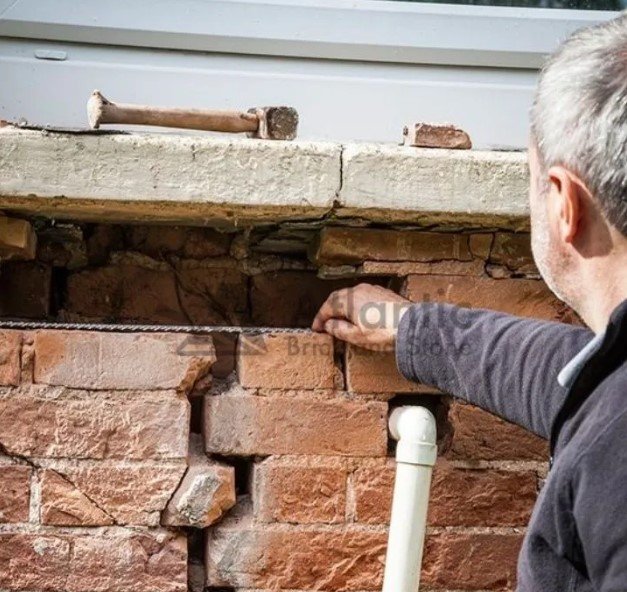Walk down any street in Fredericton and you’re sure to see masonry structures all around. These durable buildings, from humble homes to lofty skyscrapers, owe their permanence to key building materials like brick, concrete block and natural stone. Yet after decades of weathering, even the strongest of structures will begin to deteriorate if issues are not addressed. This is especially important in Fredericton where architectural heritage abounds. This presents the opportunity for masonry restoration, allowing us to not only preserve our architectural heritage for future generations in cities like Fredericton but also increase structures’ longevity. This complete guide breaks down the different restoration processes based on material types and outlines best practices suitable for projects throughout New Brunswick.

Many types of masonry are used in Fredericton construction for both structural and aesthetic purposes. Each has its advantages but also faces different issues over time. Proper identification is key to determining the best restoration approach. Here are the most common:
Brick is a very popular masonry material for both appearance and fire resistance. Over the years, brickwork can experience issues like cracking, spalling, efflorescence, and more. Brick restoration involves carefully cleaning away any dirt, debris, or loose material. Individual damaged bricks may need to be replaced to match the color and size of the existing.
Repointing is another important part of brickwork restoration. This is the process of renewing mortar joints between bricks that have degraded. The new mortar must be installed correctly to prevent water infiltration and maintain structural integrity. Signs it’s time for brick restoration include:
Natural stone like granite, limestone, and sandstone are durable but also porous. Manufactured stone is non-porous. Either can deteriorate over time from weathering and pollution. Stone restoration focuses on deep cleaning without harming the surface. Consolidation may be needed for porous stone to reinforce weak areas.
Issues with concrete masonry like cracking, scaling, and staining require cleaning, patching, and potentially reinforcing the structure. Surface restoration cleans and returns concrete to its original condition. For more extensive damage, existing concrete may need to be removed and replaced in some areas. Signs that concrete repair may be required include:
Stucco is a cement-based exterior plaster used on homes. Over time, cracking, delamination, or moisture problems can develop. Stucco restoration involves repairing damaged areas by raking out loose material. Compatible sealants may be applied before reapplying a new layer of stucco to match the original texture and color. Signs that stucco restoration may be needed:
These masonry materials are commonly used for ornamental purposes and roofing. Issues could involve cracking glazed tile, loosened terracotta, or missing sections. Restoration cleans surfaces while respecting historic details. Signs that tile or terracotta restoration may be needed:
While cleaning, repairing, and repointing make up basic restoration, some projects call for specialized techniques. Two examples are tuckpointing for mortar joints and considering lime versus cement mortar.
The mortar joints between units like brick are called tuckpointing. Over decades, mortar can break down from weathering, requiring skilled tuckpointers to restore the important barrier against water penetration. Signs that tuckpointing may be required:
Lime mortar allows structures like brick or stone to breathe naturally, while cement mortar is more hard and impervious. Lime mortar may be preferable, especially for historic buildings. However, cement mortar offers more durability in some climates, so the building material, design, and local conditions help determine the best choice.
Some minor repairs can potentially be handled yourself as a DIY project with the right guidance. Assess whether the extent and type of work is suited for an amateur.
When starting a masonry restoration project, proper specification of new materials is necessary to long-term success. Replacement materials should closely match the original in terms of texture, profile, color, and performance properties. Sustainable and eco-friendly options are available like plant-based pigments and local stone/aggregates to minimize environmental impacts of extensive restoration.
For anything beyond minor masonry repairs, hiring a qualified masonry restoration contractor provides peace of mind. Skilled professionals have extensive training and experience ensuring your project meets technical requirements and desired outcomes.
In Fredericton, a top option for masonry work is Atlantic Brick and Stone. As a full-service masonry company, our trained team provides quality restoration work for commercial and residential properties of all styles. Don’t hesitate to contact us for your restoration needs. We promise to treat each customer and project with the utmost care and attention to detail.
Proper preventative maintenance through routine inspection and minor repairs is key to avoiding costly restoration work down the line.
GET STARTED
Create stunning structures with our residential and commercial masonry services in Fredericton. From meticulous designs to the completed build, our process is professional and rewarding, and we can’t wait to build your dream with you.
Atlantic Brick and Stone, one of the best masonry contractors in Fredericton, NB
Contact
8 Muskie Street, Lower Kingsclear, New Brunswick E3E 0E7, Canada